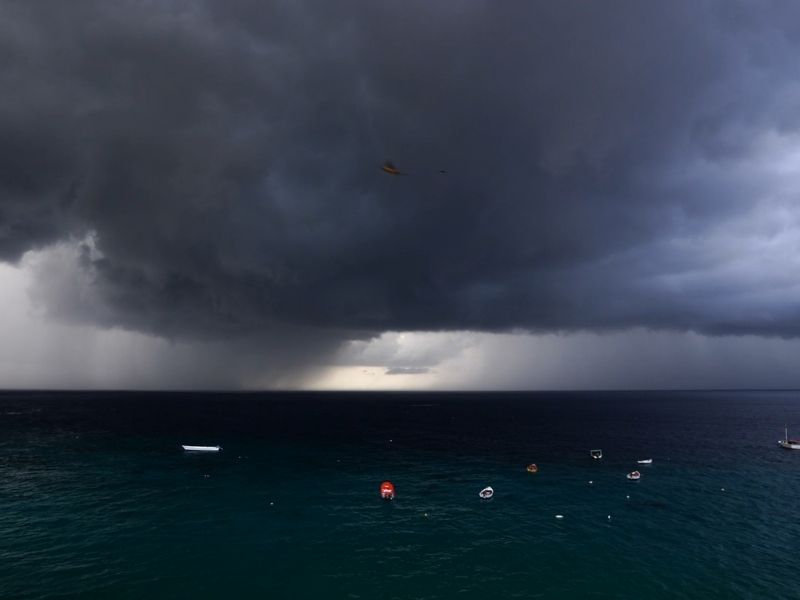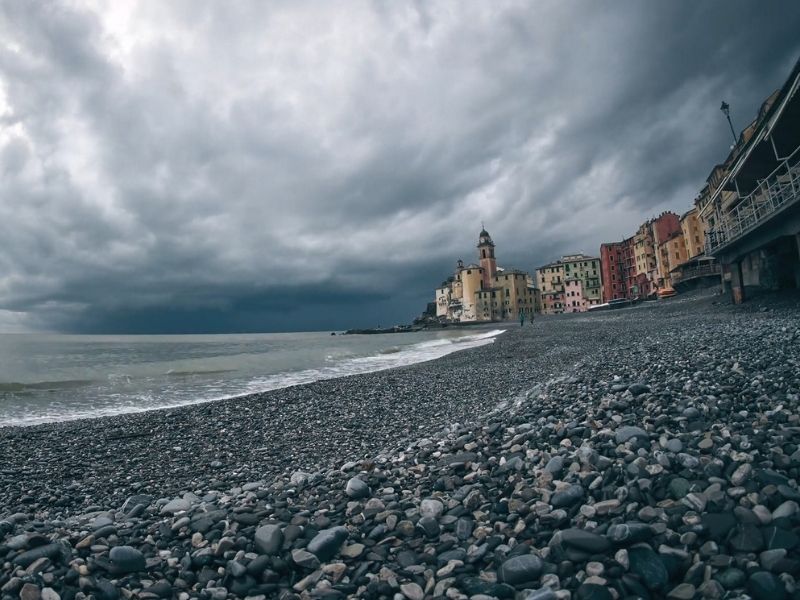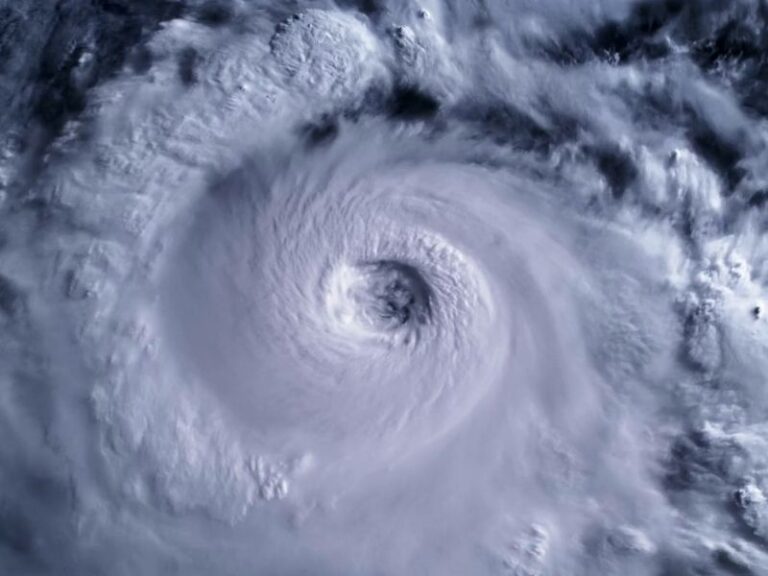Hurricanes are powerful tropical storms with high winds, heavy rain, and low pressure.
While they primarily form in the Atlantic and Caribbean, their impact on Europe is increasing.
Historically, Europe has rarely experienced direct hurricanes, but remnants of these storms have affected the continent more frequently in recent years.
Climate change plays a crucial role in altering hurricane patterns, leading to more extreme weather events.
Rising ocean temperatures contribute to stronger storms, increasing the risk for European countries.
Understanding hurricane formation, historical trends, and climate-related shifts is essential for assessing future risks and preparing for potential impacts on European weather systems.

The Definition and Nature of Hurricanes
Hurricanes are intense tropical storms characterized by low atmospheric pressure, high winds, and heavy rain.
While the prime regions for hurricane activity typically include the Atlantic and Caribbean, there is a growing potential for these storms to influence Europe.
The historical presence of cyclones impacting Europe dates back to the earliest believed hurricane in 1842, demonstrating that these powerful weather systems can traverse and affect various locations.
How Hurricanes Form and Thrive
View this post on Instagram
The formation of hurricanes relies on several key factors.
Warm ocean waters are essential, as they provide the heat energy necessary for storm development.
Additionally, conducive wind patterns and a humid atmosphere contribute to the growth and evolution of these storms.
The peak months for hurricanes affecting Europe occur from August to October, aligning with the hurricane season in Europe.
With projections indicating an increase in cyclone activity offshore western Europe by 2100, from an estimated 2 to 13 instances of hurricane-force winds, understanding these dynamics becomes increasingly important.
In summary, while the frequency of hurricanes in European countries may not match that of more tropical regions, understanding their formation and potential impacts remains crucial as climate patterns continue to evolve.
Does Europe Have Hurricanes?
Analyzing the presence of hurricanes in Europe reveals an intriguing historical narrative alongside current trends.
This investigation sheds light on the historical evidence of hurricanes in Europe and the increasing frequency of storm remnants in recent years.

Historical Evidence of Hurricanes in European Countries
Impact Metric
Ireland
United Kingdom
Peak Wind Gusts
Up to 156 km/h (97 mph)
Up to 113 km/h (70 mph)
Power Outages
~360,000 customers affected
Thousands affected
Fatalities
3 reported
None reported
Major Disruptions
Transport and Infrastructure
Transport services
For over 50 years, Europe has not experienced a hurricane directly reaching its shores.
Despite this, remnants of around 30 hurricanes have made their way to the continent since 2000, typically arriving as weakened tropical storms.
This devastating storm marked a significant event in recent history, leading to reported fatalities and extensive damage, with downed trees impacting public roads and highways.
Current Instances and Trends of Hurricane Patterns in Europe
Metric
Current Average
Projected Average by 2100
Percentage Increase
Cyclones with Hurricane-Force Winds Offshore Western Europe
2 per year
13 per year
+550%
The situation appears to be evolving.
Current models suggest that by the end of the 21st century, Europe might see an average of 13 powerful storms during the hurricane season, a notable rise from the current average of two.
September 2023 illustrated this trend when three ex-hurricanes, including ex-hurricane Nigel, ex-hurricane Lee, and ex-tropical storm Ophelia (known as storm Agnes), impacted Ireland.
Winds from storm Agnes reached up to 80 km/h, resulting in power outages and flooding, particularly in parts of County Cork.
Research points to a significant increase in ex-tropical cyclones in the latitude band of 50-60 degrees north since 1968, which includes much of Ireland.
The interaction between warmer ocean temperatures and weakened wind shear conditions supports the likelihood of hurricanes in the Mediterranean and beyond.
The IPCC report notes a rise in ocean temperatures by 0.88°C since the 1900s, contributing to this shift in Europe hurricane patterns.
Recent Hurricane Activity in Europe (2024)
When #Kirk reaches Europe it will no longer be a hurricane, but the storm could still bring strong winds to parts of Spain, Portugal, France, Belgium, and the UK next week.
This map shows the latest ICON wind gusts forecast plus the latest forecast path from the NHC: pic.twitter.com/G5fuAVBtfZ
— Zoom Earth (@zoom_earth) October 5, 2024
In 2024, Europe experienced continued evidence of shifting hurricane patterns, with several storms impacting the continent more directly. Most notably, in September 2024, Ex-Hurricane Kirk reached northern Spain and western France, bringing torrential rain and wind speeds up to 95 km/h.
The storm disrupted rail services and caused over 120,000 power outages across Galicia and the Bay of Biscay region.
Earlier in July, a rare subtropical cyclone formed near the Azores, which later transitioned into a post-tropical storm that impacted parts of the UK with localized flooding in southern England.
Meteorologists noted that sea surface temperatures in the northeast Atlantic were 1.2°C above average at the time—conditions favorable for unusual storm formation and intensification.
These events further support climate models suggesting that Europe may face more frequent and intense post-tropical storm events as oceanic and atmospheric patterns continue to shift.
The Impact of Climate Change on European Weather Patterns
Climate change is reshaping European weather patterns, leading to an increase in extreme weather events in Europe, including hurricanes.
Understanding how climate change and hurricanes are interconnected reveals important insights about the future of weather systems across the continent.
@thetelegraph Summer temperatures of 50C could happen every three years in Europe, the Met Office has found. #cop#environment#climatechange#climatecrisis
The Growing Threat of Medicanes in Southern Europe
Medicane Name
Year
Affected Regions
Rainfall Amounts
Wind Speeds
Notable Impacts
Apollo
2021
Sicily, Italy
>200 mm in Syracuse
Data not specified
Flooding, infrastructure damage
Renata
2023
Calabria & Sicily, Italy
>200 mm in 48 hours
Up to 100 km/h
Landslides, widespread flooding, red alerts issued
While traditional hurricanes in Europe remain rare, the Mediterranean region is increasingly witnessing a rise in “Medicanes”—hurricane-like storms that form over the warm Mediterranean Sea. These systems are typically smaller than Atlantic hurricanes but can be just as destructive due to flash flooding and intense winds.
Researchers have observed a marked increase in Medicane frequency and intensity over the past two decades, attributing this to rising sea surface temperatures in the Mediterranean—one of the fastest-warming seas globally.
Medicanes represent a growing climate threat for southern Europe, particularly for coastal cities with limited stormwater infrastructure. As such, they are becoming a crucial part of Europe’s evolving extreme weather narrative.
How Climate Change Is Influencing Hurricane Frequency
The rise in global temperatures has significant implications for hurricane activity.
Research indicates that human-caused climate change doubled the risk of experiencing extreme heatwaves, as seen in the catastrophic summer of 2003, which led to over 70,000 deaths in Europe.
Additionally, studies show that as the climate continues to warm, the global climate and hurricane frequency may begin to correlate more closely, potentially increasing the severity and likelihood of such storms.
Extreme Weather Events Linked to Climate Change in Europe
Impact Metric
Value
Total Fatalities
85,000 to 145,000
Economic Losses
Approximately €500 billion
Recent extreme weather events highlight the link between climate change and the increasing volatility of European weather.
Of these, 547 events were deemed more likely or severe due to climate change.
The most prevalent events included heat-related occurrences and rainfall, which together made up over 50% of the analyzed cases.
In total, 74% of extreme weather events were found to be more severe due to climate change, underlining the significant impact it has on European climatology.
Conclusion
Hurricanes have historically been rare in Europe, but changing climate patterns are increasing their presence.
Rising ocean temperatures and shifting wind conditions contribute to the growing frequency of powerful storms reaching European shores.
Historical data and recent trends indicate that Europe will likely experience more storm remnants and extreme weather events in the future.
Understanding these changes is essential for improving preparedness and minimizing risks.
As climate change continues to influence global weather patterns, European countries must adapt to the increasing threat of hurricanes and other severe storms, emphasizing the need for effective mitigation and response strategies.

